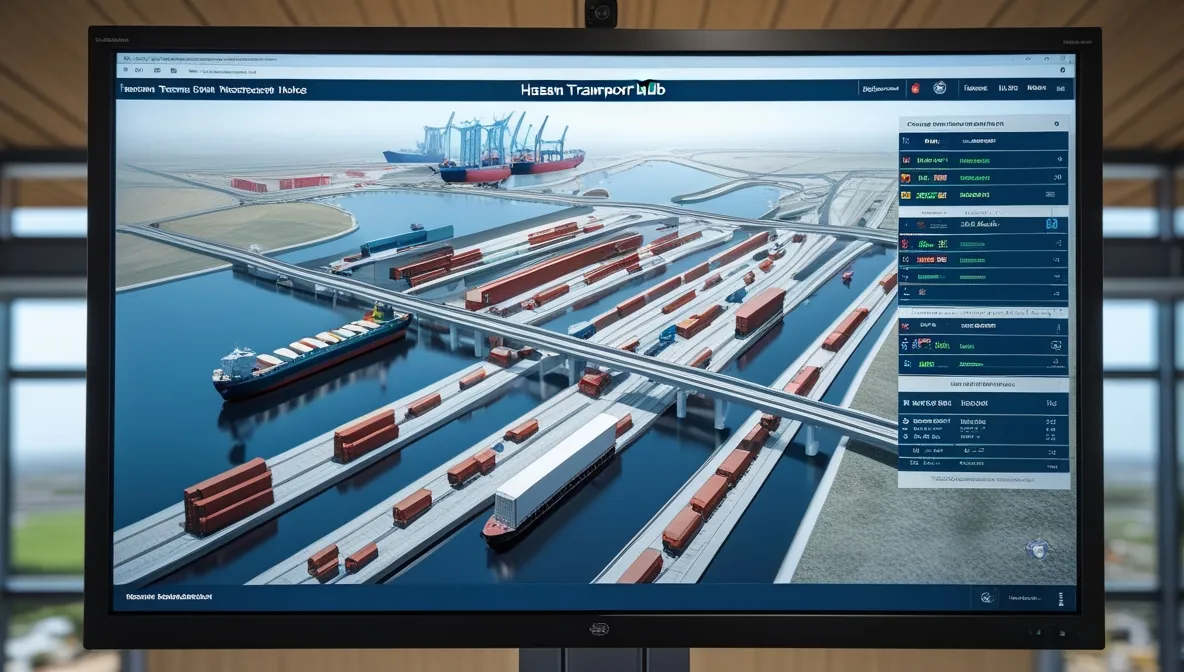Khasan Transport Hub: A Pilot of Russia’s Logistics Revolution
A joint project by Russian company SIMETRA and Admiral Nevelskoy Maritime State University has created a digital twin of the Khasan Transport Hub in the Primorsky Territory — a strategic gateway between Russia and Asia. The initiative represents a major leap toward smarter, data-driven logistics infrastructure across the Far East.

A Virtual Twin for a Real Megahub
Developed using the domestic RITM platform under the Priority-2030 strategic academic leadership program, the Khasan Transport Hub digital twin represents one of Russia’s most ambitious logistics modernization efforts.
The hub is a key node in the Eurasian transport network, integrating maritime ports, border checkpoints, freight terminals, and both rail and highway routes across the southern Primorsky region. The digital twin enables engineers and planners to simulate cargo flows before construction, identifying bottlenecks and reducing project costs by eliminating redundant infrastructure. By testing dozens of logistics scenarios, planners can determine the exact capacity needed for terminals and transport corridors, ensuring investment precision and efficiency.

For the Primorsky Territory, the system promises stronger trade connections with Asia, while citizens benefit from faster delivery and potentially lower freight costs. At the national level, the project strengthens Russia’s digital logistics capabilities and promotes the country’s expertise in smart transport systems.
Digital Twins Gain Momentum
The success of the Khasan digital twin opens new export opportunities for Russian IT solutions. According to Alexander Volovik, Commercial Director at BIA Technologies, demand for digital twin systems in logistics has surged by 40%. These technologies are increasingly applied across logistics and retail sectors to optimize warehouse operations and supply chain performance.
SIMETRA’s modeling forecasts show that digital twin integration can cut logistics costs by 18–30%, reduce delivery times by up to 25%, and decrease vehicle usage by as much as 30% through route and load optimization.
Russia’s domestic market continues to expand rapidly — from an estimated $990m in demand for logistics digitalization in 2020 to a projected $6.9bn by 2030.

An Expanding Digital Ecosystem
The Khasan project is part of a broader national transition toward digital twins across multiple industries. Gazprom Neft employs digital twins of oil fields and production assets to enhance resource management. Sibsteklo has developed a twin of its glass container plant, increasing productivity by roughly 10% through process optimization. T Plus has implemented a digital twin of Yekaterinburg’s heating network, improving heat distribution and reducing losses.
Meanwhile, Russian Railways uses digital twins to optimize train routes and reduce incidents on the network by 30–40%.

Digital Transformation on the Move
By 2027, the Khasan Transport Hub’s digital twin is expected to become a key planning instrument for infrastructure expansion and reconstruction, guiding investments into new terminals, roads, and ports. By 2030, Russia aims to scale this technology to other logistics hubs across Siberia and the Far East. Artificial intelligence–powered routing, monitoring, and analytics modules are set to become standard in the logistics industry.
Currently, one in four small and mid-sized logistics firms uses IoT solutions for fleet monitoring, while large enterprises with revenues exceeding $1b are actively deploying digital twin platforms.
In the long term, Russia envisions a nationwide digital twin ecosystem for its entire transport infrastructure, potentially exportable to countries investing in autonomous logistics and smart road systems.










































